I am mapping an idea for a relationship using Core Data.
I have an Employer entity who has a many-to-many relationship with Employees. Basically, an employee can work for multiple employers, and an employer can have multiple employees.
The problem I'm facing is, I'm not sure how to manage the contracts between employees and employers.
As an employee can work for either 1 or many employers, they would naturally have a contract for each employer they work for (complete with salary, duration) and a list of dates when they are working for a specific employer.
My question is - how to manage the relationships between Contracts, ContractDates with Employers and Employees?
Thank you.
Image follows.

